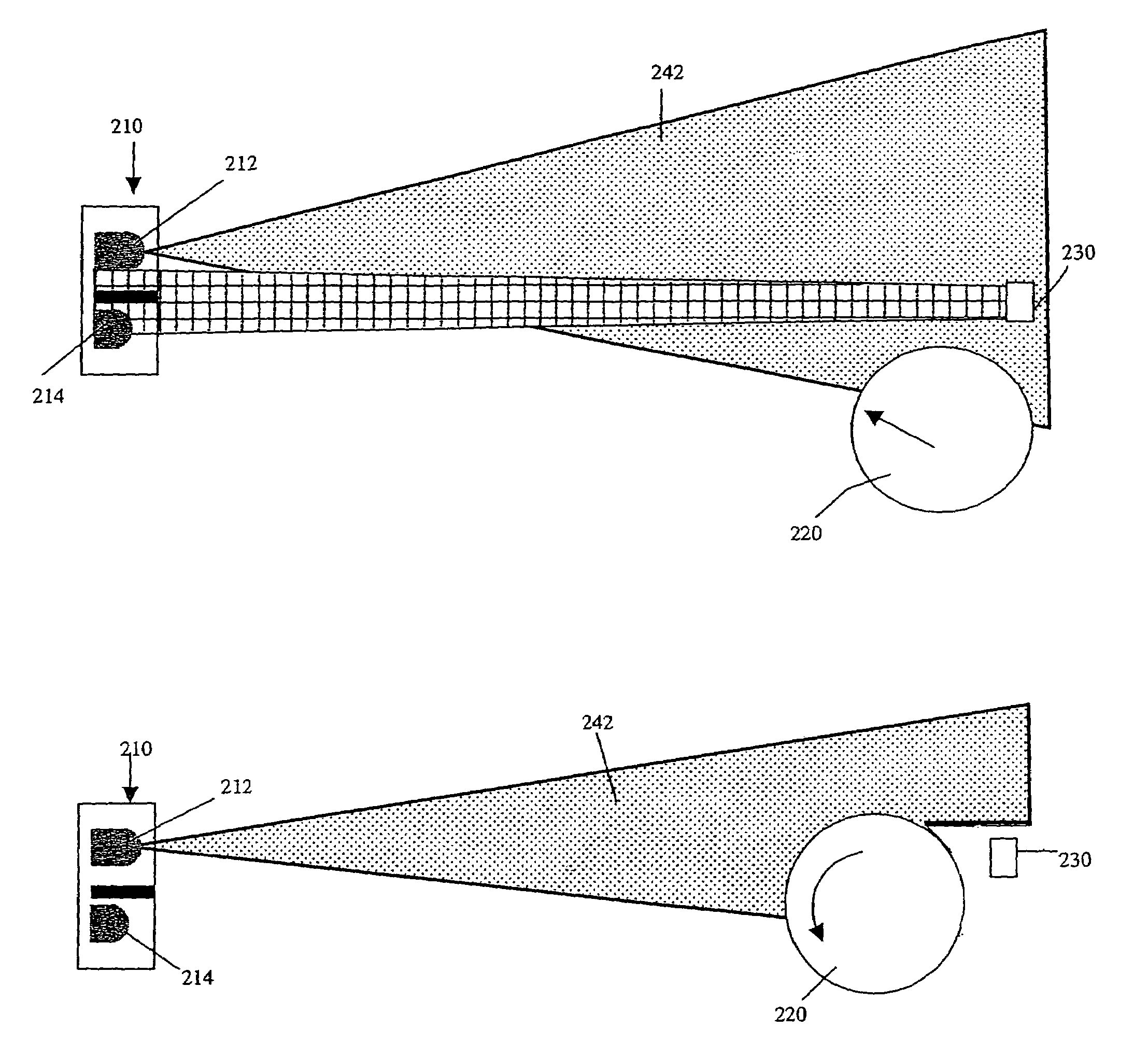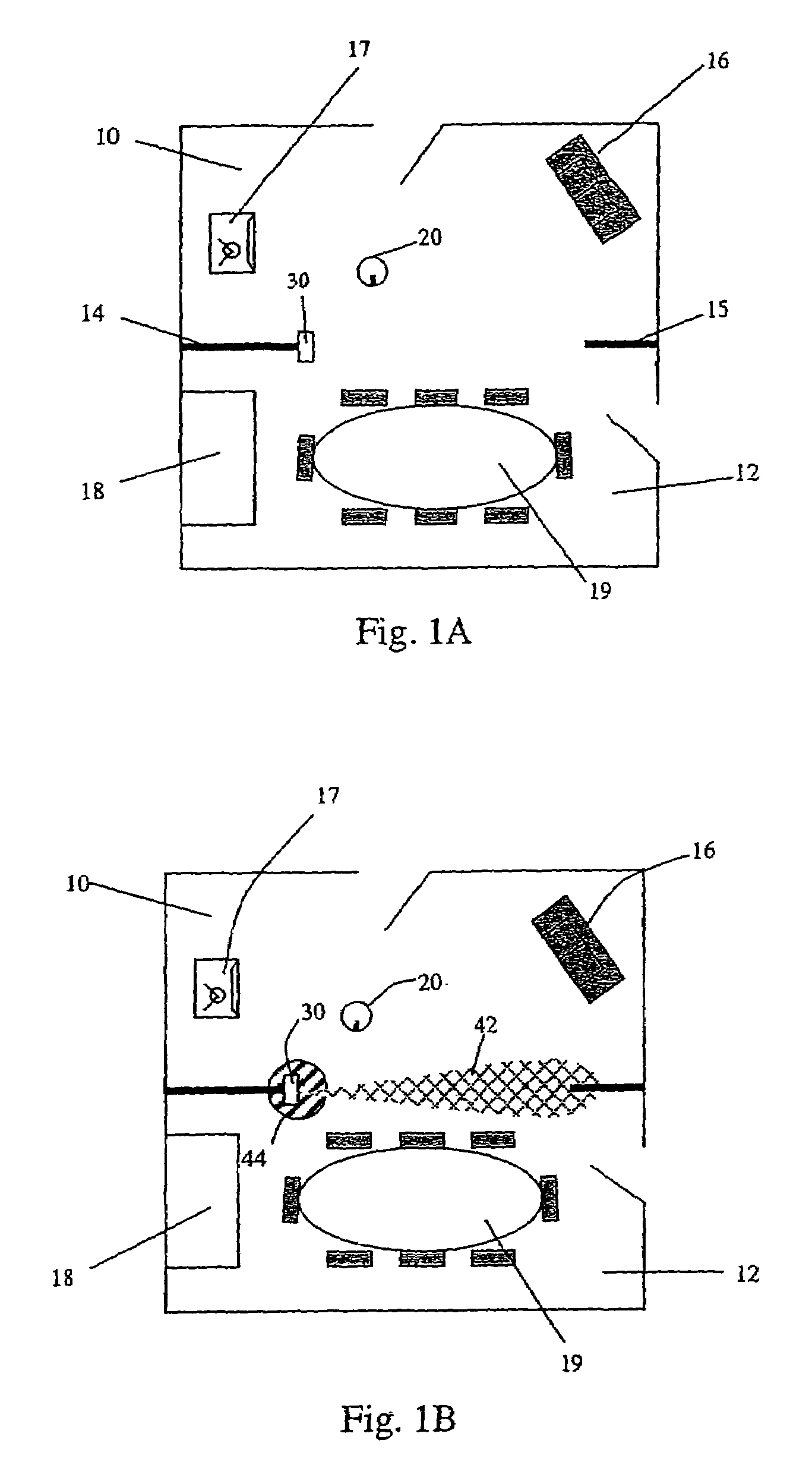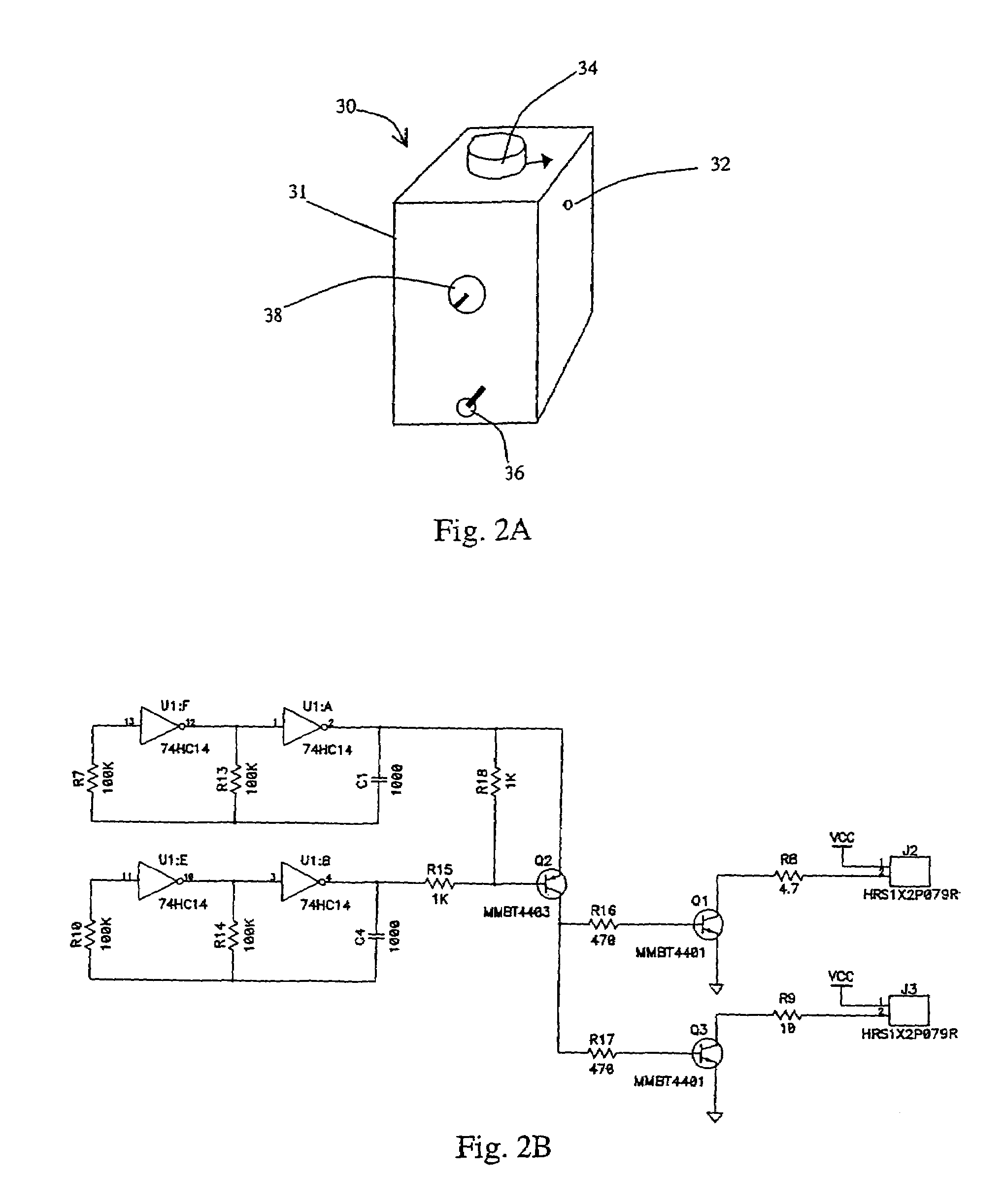Method and system for robot localization and confinement
a robot and localization technology, applied in the field of robot localization and confinement, can solve the problems of unintentional wandering of vacuuming robots working in one room from one room to another before satisfactorily, difficult placement of doors or other physical barriers in the robot's exit path, and difficulty in locating the exit path of the robo
- Summary
- Abstract
- Description
- Claims
- Application Information
AI Technical Summary
Benefits of technology
Problems solved by technology
Method used
Image
Examples
Embodiment Construction
[0031]Referring to FIGS. 1A & 1B, living room 10 is shown separated from dining room 12 by interior walls 14&15. The living room and / or dining room may contain various furnishings, for example, couch 16, television 17, buffet 18 and table and chairs 19.
[0032]The rooms also contain a mobile robot 20 and a barrier signal transmitting device 30, which for purposes of this specification is also called a robot confinement (or RCON) transmitter 30. In FIGS. 1A & 1B, the robot is placed in the living room 10, and the RCON transmitter 30 is placed in the area dividing the living room 10 from the dining room 12, against interior wall 14 and pointing toward interior wall 15.
[0033]As described in more detail herein, FIG. 1B shows the same configuration of rooms with the RCON transmitter 30 in a powered state emitting, e.g., an infrared beam 42 from the RCON transmitter 30 toward interior wall 15. The beam 42 is directed primarily along an axis to create a boundary or barrier between living roo...
PUM
 Login to View More
Login to View More Abstract
Description
Claims
Application Information
 Login to View More
Login to View More - R&D
- Intellectual Property
- Life Sciences
- Materials
- Tech Scout
- Unparalleled Data Quality
- Higher Quality Content
- 60% Fewer Hallucinations
Browse by: Latest US Patents, China's latest patents, Technical Efficacy Thesaurus, Application Domain, Technology Topic, Popular Technical Reports.
© 2025 PatSnap. All rights reserved.Legal|Privacy policy|Modern Slavery Act Transparency Statement|Sitemap|About US| Contact US: help@patsnap.com



